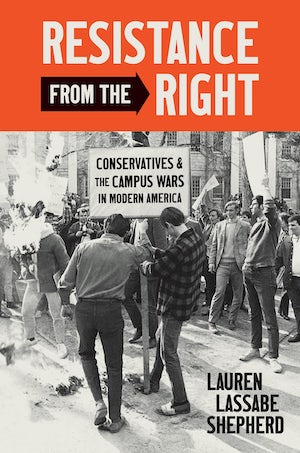Ian Ward: Why is the period between 1965 and 1970 so important for understanding conservatives’ contemporary preoccupation with higher education?
Lauren Lassabe Shepherd: It’s important for understanding how conservative students start to organize themselves on college campuses. In the 1960s, the student right became especially organized, especially well funded, and especially combative, and the cohort of students who were on campus during those years went on to lead extremely consequential careers in conservative politics. These are people like Newt Gingrich, Pat Buchanan, David Keene — who went on to become the president of the NRA — as well as David Duke, Jeff Sessions and Bill Barr. So many of these men — and they are all men — go on to do really consequential things in the American political system, especially within the GOP.
Ward: What were the issues that the campus right was organizing around during that period? What was happening on college campuses that they were reacting against?
Shepherd: Towards the end of the 1960s, the Vietnam War was ramping up, and campuses were seeing more anti-war activities, especially surrounding the draft. So the student right was focused less on international fights against communism and more on specific campus battles about students who were trying to avoid the draft.
The other focus was fighting with students who were trying to get Black studies programs created on campuses. It wasn’t a pedagogical thing — they had no problem with Russian studies courses or Asian studies courses or any area of study that might have helped them understand the Cold War or get an ideological leg up on the enemy by knowing their culture and history and politics. But they had very specific vitriol reserved for Black studies programs.
Ward: What was the source of that vitriol? Was it just racial animus, or did the activists have other objections to those programs?
Shepherd: Students on the right wrapped their racial animus in the language of anti-communism and “Americanism,” which was a euphemism that essentially captured the attitudes and aesthetics of white, wealthy Christians. Rather than protesting Black studies in ways that might make their racism overt — though some [protests] were overt — students instead campaigned against their creation by drawing attention to what they saw as the violent contexts in which the programs emerged — usually as an administrative concession to strikes by Black students.
And, of course, under the direction of right-wing movement leaders whose own Cold War politics frequently relied on red baiting, students in the ’60s strategically branded Black Power organizing as not just anti-American, but fully communist.
